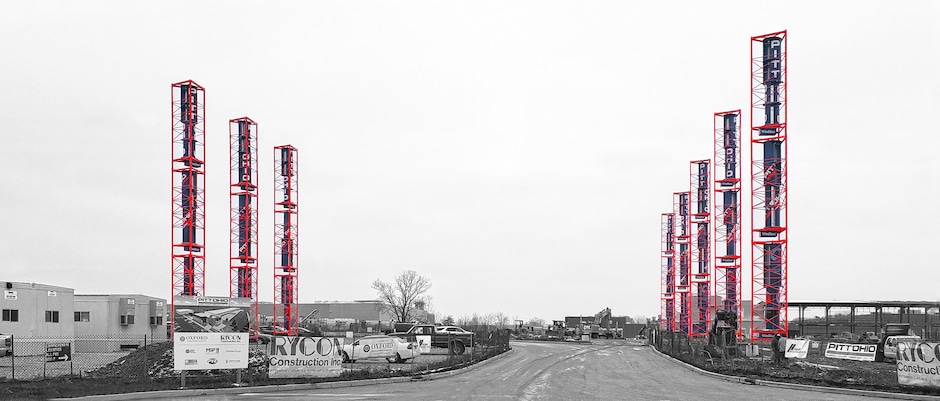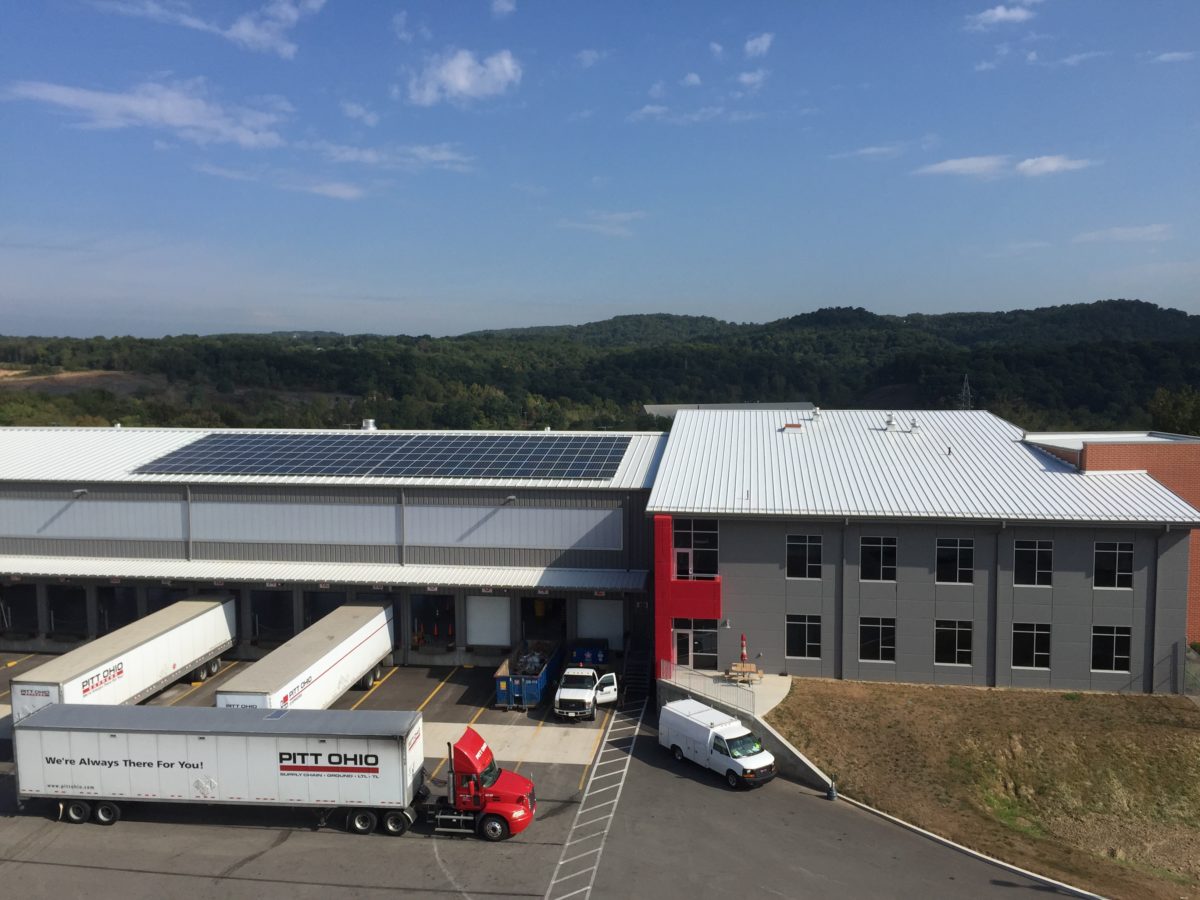There once was a debate between two gentlemen – one was in support of alternating current (AC) for the power grid, while the other sought a direct current solution (DC). Nikola Tesla’s AC power grid won out, but Thomas Edison’s DC is sticking around here and there.
Ensync Energy been contracted by WindStax, a vertical wind turbine manufacturer and wind+solar integrator, to supply energy storage, systems integration, and O&M for 25 years for a new microgrid project for trucking and logistics company PITT Ohio. Construction at the site has commenced, and is projected to complete in the spring of 2019.
The microgrid utilize 495 kW of solar energy and 48 kW of wind energy generation via eight wind turbines.
Ensync will install its DER SuperModule (pdf) with 730 kWh of energy storage. The SuperModule is a plug-and-play 20 foot shipping container system that integrates many Ensync-designed subcomponents (below).

Ensync’s Matrix Energy Management system and DER Flex IOE software platform run the system command, communication and control. The system works both in the net metering programs, while also providing backup energy during grid disturbances.
The microgrid will be able to operate ‘autonomously’, and in ‘island mode’. The system is sized to meet the Parma terminal’s electricity loads during grid outages, with some space.
The EnSync hardware uses a DC powered bus, and the above noted hardware, to tie together the multiple electricity sources: wind+solar+storage+grid.

Another PITT Ohio location has installed 180 solar panels at ~355 W each totaling about 64 MWdc, a 38-foot-tall 6 kW wind turbine, and battery storage. Everything in this terminal at the Harmar, Ohio location is powered by a microgrid designed by University of Pittsburgh researchers, including the forklifts, lights, batteries, computers and a DC lighting system.
According to Justine Russo, Director of Sustainability and Business Intelligence at PITT Ohio:
Our electric forklifts are powered by renewable energy that we are able to generate and store onsite and these forklifts are also cleaner and quieter, which employees have said make for a better work environment. We are now installing electric forklifts at multiple facilities and are looking for where we can add renewable energy to power them.
Jim Fields, chief operating officer at PITT OHIO, said that the Swanson School of Engineering at University of Pittsburgh had given the company system sizing guidance for all future renewable construction plans with their software models.
This content is protected by copyright and may not be reused. If you want to cooperate with us and would like to reuse some of our content, please contact: editors@pv-magazine.com.








DC isn’t just sticking around, it’s everywhere, just a lot less noticed or thought about. That little black brick that sits between your computer plug and the 3 prong plug for the wall is a Rectifier. All those power supplies in desktops, servers, switches routers and everything else that makes up the Internet are also rectifiers, converting AC to DC. Even that USB you plug into the little wall plug for charging phones are little rectifiers. On the device side of the rectifier, it’s DC all the way. Motors (vacuums, washing and drying machines) all use DC, they just convert it from AC. AC is mostly used for transmission of electricity over distance. DC can even be used for this purpose.
To the point of this article.. microgrids are the future… the better future is community-based microgrids, where neighbors truly share power with each other. The Internet can work much the same way as well. It’s starting to happen!
An important benefit of a microgrid approach is intrinsic robustness: Well-designed microgrids with both local generation and local load/source leveling storage can be operated independently of the the larger system if needed.
Power and load sharing by connecting microgrids to a wider system is a good way to optimize overall system costs and benefits. Robustness is enhanced for the microgrid operator by allowing continuity of service for the local customers of an interconnected microgrid while its generating or storage subsystems are undergoing maintenance.
Decentralization also improves the balance of market power between communities and a wider network.